Baseball History Comes Alive Now Ranked #2 by Feedspot Among All Internet Baseball History Websites and Blogs!
Guest Submissions from Our Readers Always Welcome!
Scroll Down to Read Today’s Essay
Subscribe to Baseball History Comes Alive for automatic updates. As a Free Bonus, you’ll get instant access to my Special Report: Gary’s Handy Dandy World Series Reference Guide!
Billy “The Kid” Martin Photo Gallery
Click on any image below to see photos in full size and to start Photo Gallery:
Today Michael Keedy continues with his ongoing series featuring Top-Ten World Series catches. Today’s entry, number eight, features Billy Martin’s Series-saving grab in 1952. As usual, it’s written in Michael’s distinctive, slightly cryptic writing style with plenty of wry, tongue-in-cheek humor (I often tell Michael I have to read his sentences twice to capture his meaning!) Anyway, whatever Michael writes is always worth reading and this essay is no exception. I think you’ll enjoy it -GL
Michael Keedy’s Top-Ten Greatest World Series Catches!
No. Eight:
Billy “The Kid” Martin, 1952
If your lightheaded Uncle Looie happened to lurch across the living-room carpet on a fine fall afternoon seventy years ago after a long night and ill-advised early morning at Lily Langtry’s Downtown Lounge, listening vaguely to Game Six or Game Seven of the ’52 World Series on the old Philco but plausibly mistaking the broadcast for an episode of “The Keystone Kops,” he could well have been forgiven for his confusion. Either one was that kind of game. In fact, it was that sort of a series.
The Star-Crossed Dodgers of the 1950s
Legend has it that the Brooklyn Dodgers were the cream of the National League in the first half of the 1950s. Had their stars been oh-so-slightly better aligned, the thinking goes, they coulda-woulda been world-beaters and not mere contenders. After all, and according to General Manager Branch Rickey, they “traded for the pennant” in 1951 by picking up one Andy Pafko from the Cubs and parking him in left field. They already had Billy Cox, one of the greatest glovemen on the planet, at third; Carl Furillo, their “Reading Rifle” in right; and a remaining roster of regulars replete with future Hall-of-Famers (Campanella, Robinson, Reese, Snider, and Hodges), to say nothing about an established corps of pitching arms that was the envy of the major leagues.
For these Dodgers, though, things didn’t quite work out the way they were drawn up on paper. Did they? Through a five-year stretch beginning in 1950 but not necessarily in rank order, they: 1. were short-circuited on the last day of the season as Dick Sisler’s tenth-inning homer off Don Newcombe sent the Philly
“Whiz Kids” to meet the mighty Yankees (1950); 2. fell victim to Bobby Thomson’s “Shot Heard ‘Round the World,” with Pafko watching helplessly at the wall (1951); 3. ceded the pennant outright to the Giants (1954); 4. fell two games short of a world title with one of the greatest lineups in league history (1953); and 5.
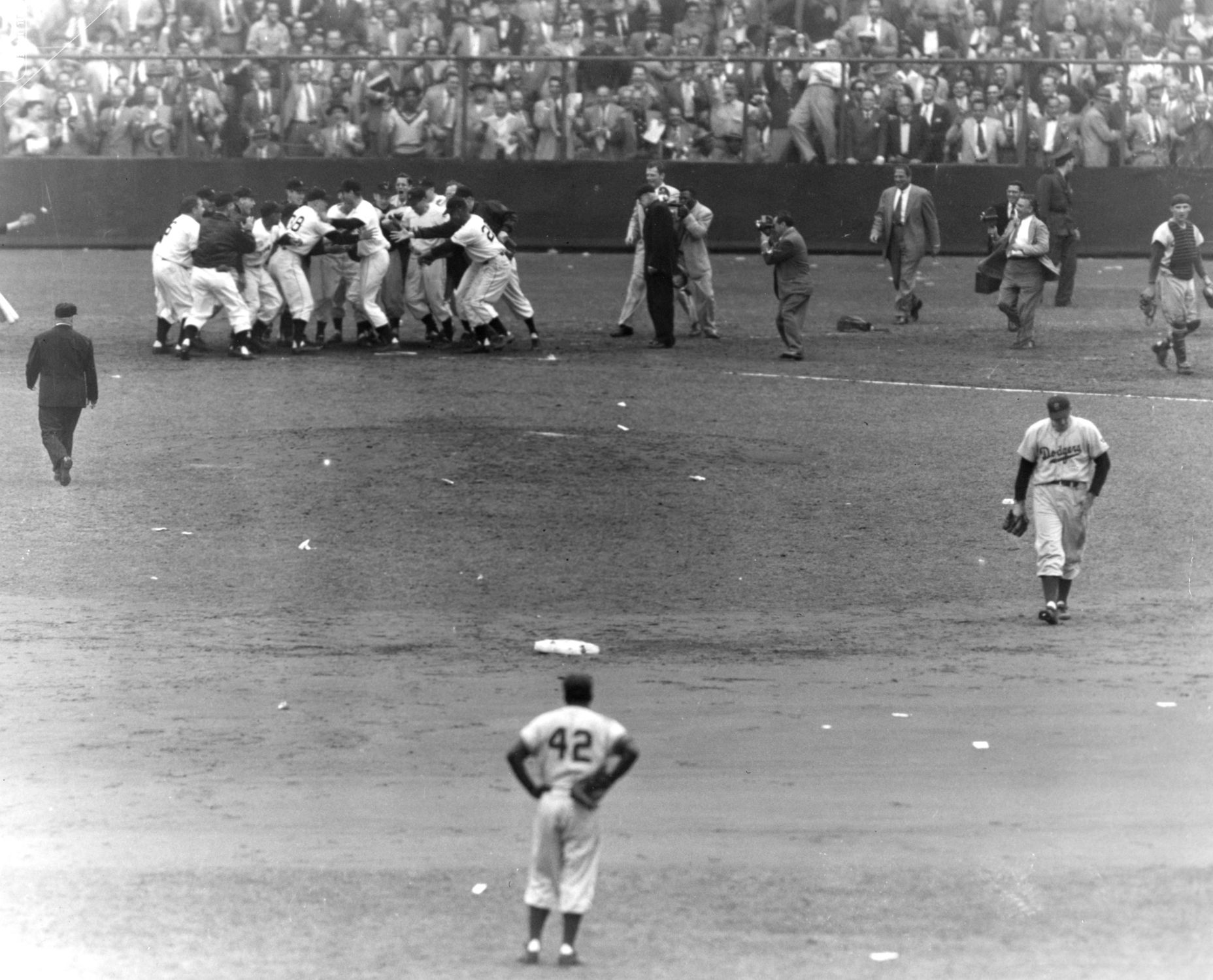
dropped Games Six and Seven of the Series with a whimper when a single bang would have taken them to the promised land (1952). In short, halfway through the 1950s, these celebrated “Boys of Summer” were oh-for-five in their exasperating and seemingly eternal search for World Series glory. It was enough to make an eleven-year-old from landlocked Nebraska cry real, human tears—about the same way he’s doing these many decades later.
Before the ‘fifty-two matchup, Dodger pitcher Billy Loes famously foresaw a Yankee win, in six games according to the press, or in seven, as Loes later insisted he had actually predicted. Either way, his crystal ball had the Dodgers going down in flames yet again. Quite possibly, Manager Charlie Dressen’s savviest chess moves of all time did not include calling upon our named soothsayer to pitch Game Six, at Ebbets Field, with Brooklyn needing just one more win to nail down its first world championship ever. It didn’t happen, of course. Instead, Loes managed to blow a one-run lead in the 7th by yielding a leadoff homer to Yogi Berra.
Tie ballgame, but never mind: The Dodgers were destined to score another run in the bottom of the eighth on Duke Snider’s home run and could win it all on that basis, don’t you see? Next, on the other hand, Gene Woodling singled to center for the Yanks, then moved smartly into scoring position when Loes simply dropped the ball onto the mound for the first balk in series history. (“Too much spit,” came the later, logical explanation.) With two down, and Loes now on the verge of getting out of the inning with no further damage, despite his dark prognosis and notwithstanding his unlikely pratfall, Yankee starter Vic Raschi tapped a bouncer back to the box for what was surely an easy and essential third out. Well, no. Unfortunately for our beloved, beguiling, and bewitching Bums, this routine ground ball was quickly scored an RBI single when Loes “lost it in the sun.” Cue Harold Lloyd! You can’t make this stuff up.
So the Dodgers kicked away a one-run ballgame that should have been their fourth and final win of the Series. They would renew their snake-bitten quest for that critical but ever-elusive victory the following afternoon, once again before a bunch of cockeyed optimists at Ebbets Field. Perhaps your Uncle Looie was listening in, on the radio, following another wasted night at Aunt Lily’s.
Mr. Steve Falco, a regular contributor here, drafted a profile of Yankee second-baseman Billy Martin just a few months ago for Baseball History Comes Alive, including a descriptive reference to Game Seven of the ‘fifty-two series. Because of that, Yours Truly decided to open this account by dwelling more on the worrisome woes of his fatally flawed flops from Flatbush than the predictably monotonous triumphs of the Bronx Bombers, who were now on the brink of capturing their fourth of five consecutive world championships for manager Casey Stengel and themselves. That game, like the one before it, could have been scripted by the likes of Max Sennett. Or Max Baer even, if you happen to enjoy being punched silly.
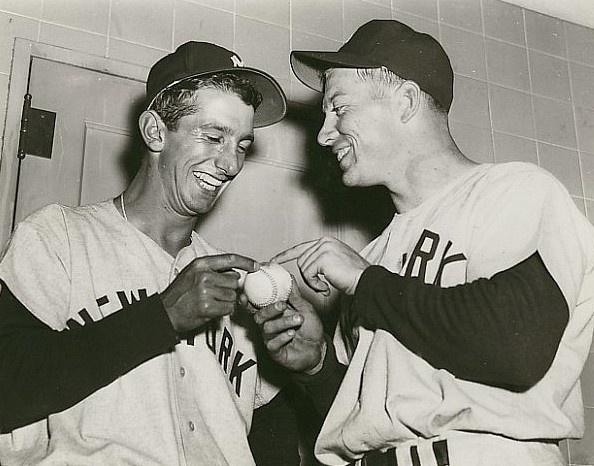
Billy “The Kid” Martin took over at second base for the Yankees when Jerry Coleman, the team’s regular, was called up by the United States Military. He was on the field in the bottom of the seventh inning of the seventh game, his team up by a score of 4-to-2. (Yawn.) But then, in a tantalizing reprise of near-misses reminiscent of all things Brooklyn in the 1950s, the Dodgers sprang to life: With Vic Raschi, yesterday’s starter on in relief, Carl Furillo walked to open the inning. Rocky Nelson, pinch-batting for Preacher Roe, popped to short. With one out now, Billy Cox singled, and Pee Wee Reese followed with another walk, loading the bases. Here, quite obviously, was the Big Brass Ring, just daring the Dodgers to reach out and grab it.
The Decisive Seventh Game
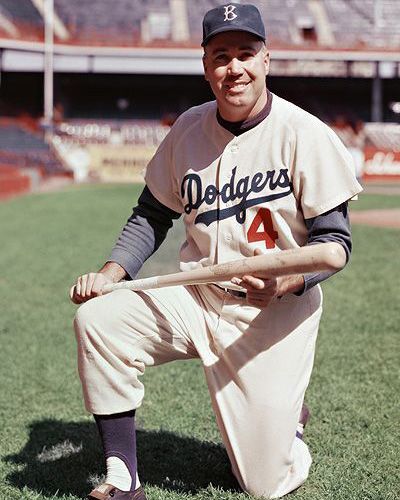
This was the moment. Everything was on the line. Duke Snider, who had already homered a record-tying four times in this series, was due up. On deck: One (1) Jackie Robinson. In came Bob Kuzava, a journeyman southpaw who found new life with the Bronx Bombers the year before, to pitch to the left-handed Duke of Flatbush. Beckoning not so far off was the Schaefer Beer sign in right, over which The Duker had sent so many balls before. Kuzava would later say the pitch he threw was one Snider could have “powdered,” in his familiar fashion, but that wasn’t the cosmic plan here. A pop to Gil McDougald at third, and strains of “Wait til next year!” began to rise again, practically like clockwork. Two gone.
For defensive reasons purely, as the inning opened Joe Collins had replaced Johnny Mize at first base. Billy Martin, over at second, was shaded well away from first when Jackie came to the plate, bases still loaded and the game still on the line. Stengel nearly pulled his pitcher in favor of a right-hander out of the bullpen, but reckoned that Robinson might not have been treated to that much left-handed pitching lately, and opted to stay with Kuzava despite the lefty-to-righty matchup favoring the hitter. With two down, all three men on base would be moving with the crack of the bat.
When Robinson hit another high pop-up on the infield, it looked like an easy play for Collins, and the end of a promising-if-fatal inning for the Dodgers. But the ghost of W.C. Fields was lurking in the stands, apparently, and Collins, who thought the ball was headed that way too, lost sight of it in the sun. With gusts of wind blowing Robinson’s ball back toward the plate, three runners motoring in that direction, and the Yankees’ first baseman peering helplessly into the void, Billy The Kid suddenly steamed from behind second and across the grass, his hat flying behind him, just in time to spear the ball at the last instant, down around his knees.
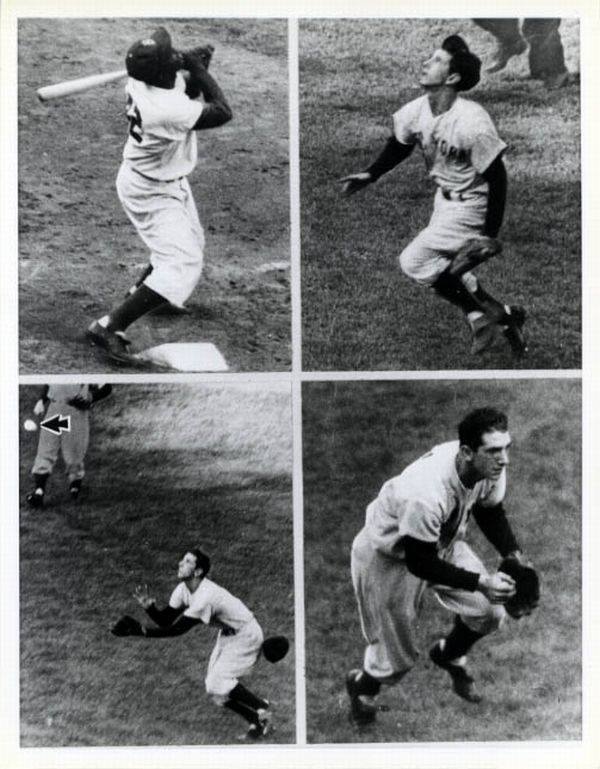
Yankee General Manager George Weiss, a no-nonsense perfectionist who was no particular fan of Billy Martin, would later describe what happened: “Little show-off. He made an easy play look hard.” But thousands of others, at the ballpark and watching the game on television, saw what the New York Times sports columnist Arthur Daley saw: “He ran out from under his hat and almost ran out of his shoes in a breakneck lunge” for the ball.
With that, the last, plaintive hope for these dispirited Brooks sailed out the window. They went without much of a murmur in the eighth, and all the more peaceably in the ninth, raising the cry of “Wait til next year!” which had carried them so often before and would have to console them again for another three, full seasons, until a devilish spell concocted by The Keystone Kops themselves was finally broken, in 1955. In the meantime, for two storied ball clubs occupying opposite poles of the spectrum labeled Dame Fortune, “the catch that almost wasn’t” was the defensive highlight of the entire series. On a pop to the infield no less!
Michael H. Keedy
Subscribe to our website, “Baseball History Comes Alive!” with over 1200 fully categorized baseball essays and photo galleries, now closing in on the one million hits mark with 880K hits and over 700 subscribers: www.baseballhistorycomesalive.com

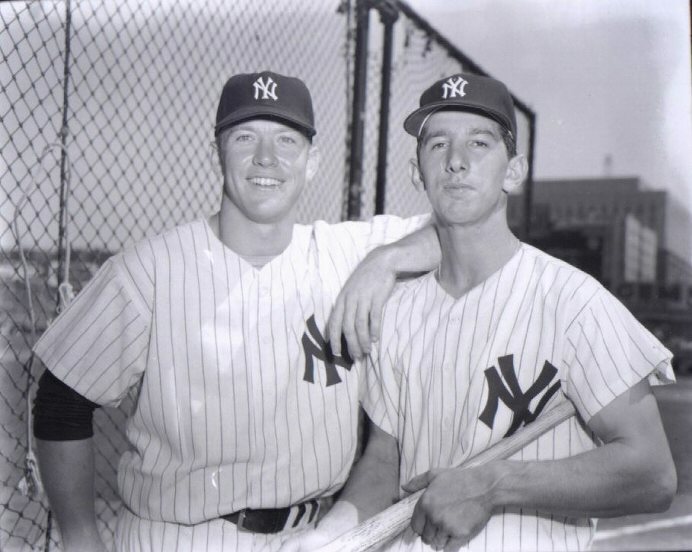
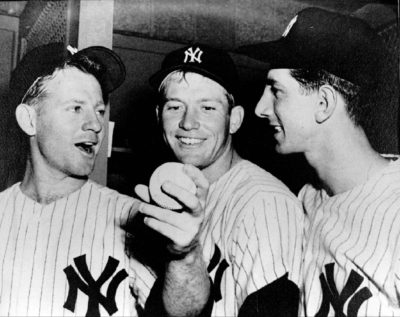
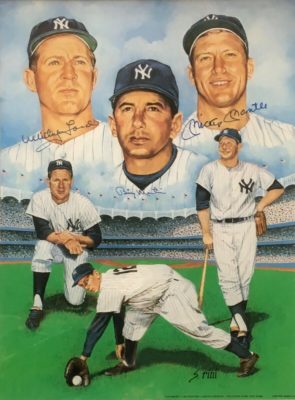
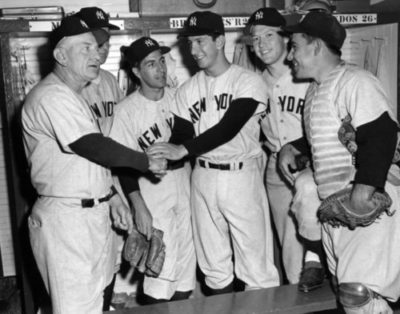
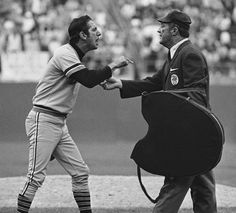
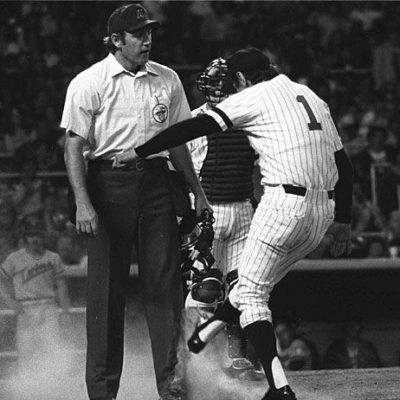
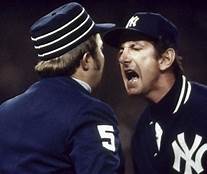
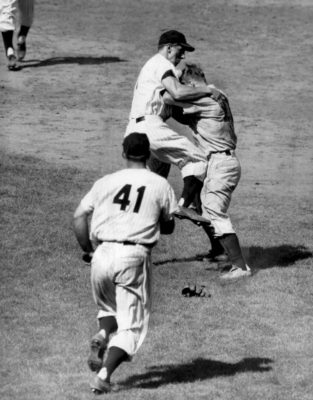
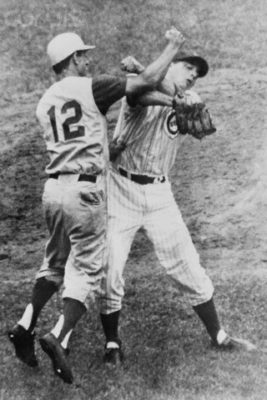
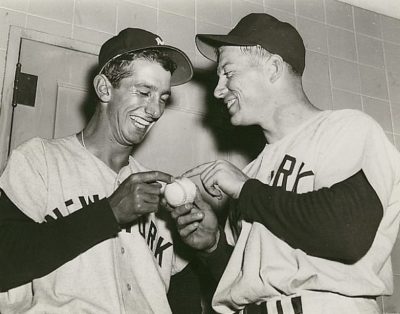

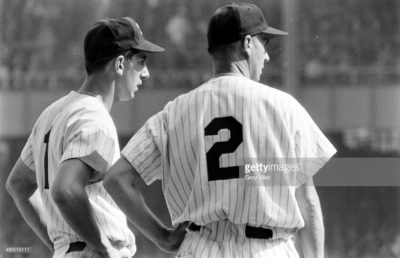
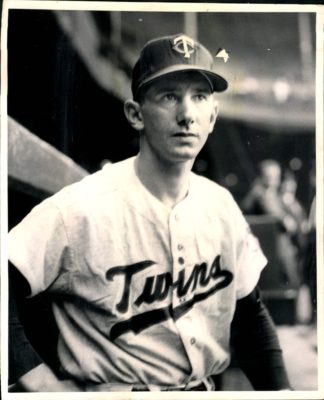
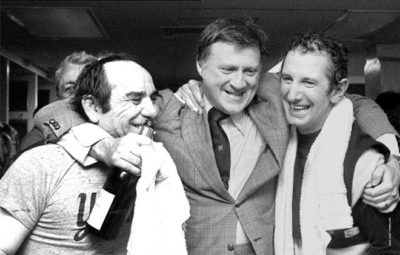
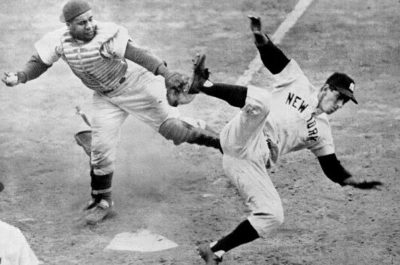
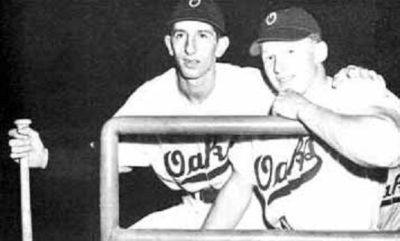
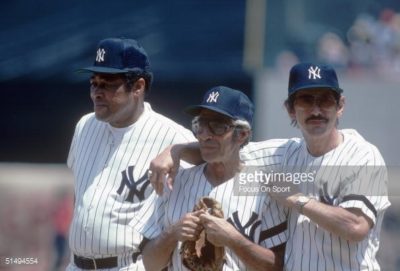
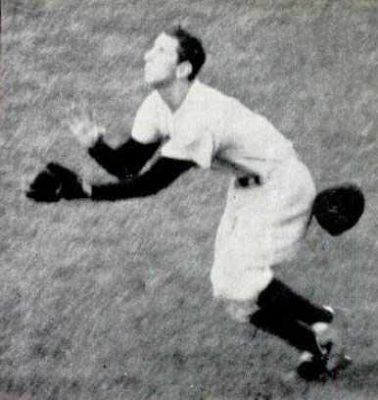
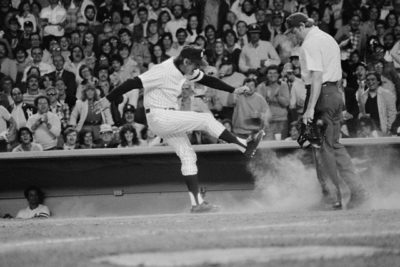
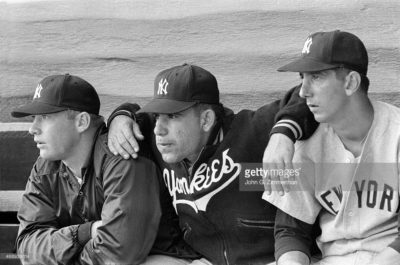
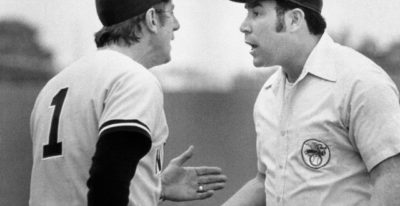
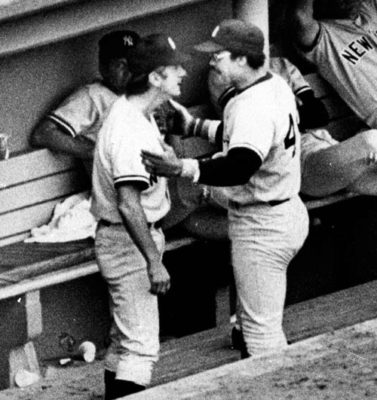
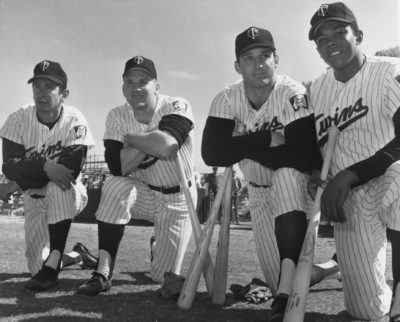
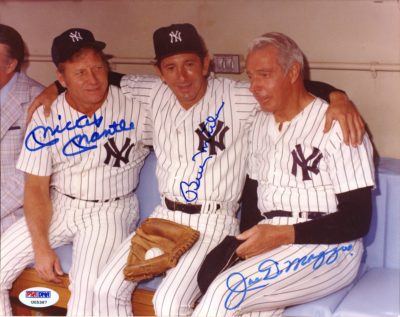
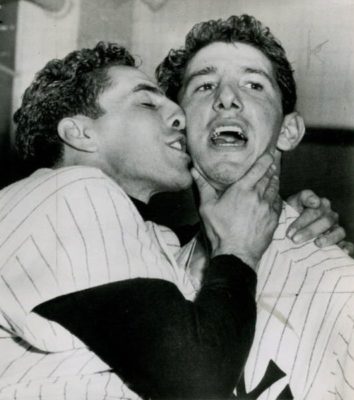
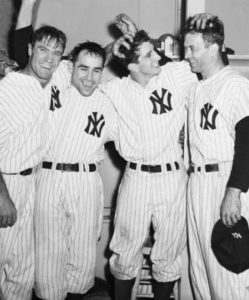
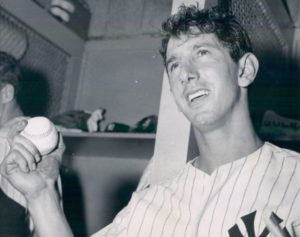
No doubt a great catch, but to call it a “Series saving” catch is a bit of a stretch. Assuming at least two runs would have scored, that would have only tied the game up; if all three runners scored, it would have given the Dodgers a 1 run lead. After that, nobody knows how the inning would have proceeded. In any event, whether the game was tied, or the Dodgers took the lead, there were still two innings left in the game. Fans always make the mistake of assuming one action will always lead to the same following results; not true. (Example- a runner gets thrown out stealing, batter then hits a HR; everyone assume the CS cost the team a run. No; whose to say the pitcher would have thrown the same pitch? Maybe a different pitch would have resulted in a ground ball double play…who knows?) So even if Billy doesn’t make the catch, it’s a whole different game from that point on. Every scenario would have been different; we will never know. Bottom line, it was a great catch that ended the inning. The Dodgers were still in the game at that point.
Love these articles and trying to figure out the next great catch!
Thanks Steve thoughtful comment…grealy appreicated.
Hi Mike and Gary:
How well I remember those years! Actually I don’t have to remember too hard since the Mets just did a pretty good imitation of those times THIS year.
I don’t follow the game the way I did in my younger days, (I was 15 on that day, Mike) but I’ll never forget the misery of “Wait ’till next year.” When the musical “Damn Yankees” appeared on Broadway, I thought it was the most appropriately named show, ever.
Fortunately, 1955 alleviated a lot of the pain and 1959 made it all moot, anyway. After the move, the L.A. Dodgers didn’t mean a thing to we Brooklyn Dodgers fans. A few years later, the Mets arrived and it started all over again.
As always, thank you, Mike and Gary, for the memories.
Kind regards, Joan
Thanks Joan, always great to hear from you and read your insightful comments!
Just back from parts south. Fine job, Michael! Your unique approach is always appreciated.
Billy Martin was a rare competitor who was always “in the game” and had the presence of mind to save what could have been a Yankee disaster had the ball dropped.
You mentioned Rocky Nelson, who was a major league mediocrity but an outstanding triple A player, always batting in the high .300 range. Apparently, many who played with him thought he choked at the higher level and compensated by becoming a “harmless loudmouth” trying to mask his inner turmoil.
To Dr. Schaefer, mentor extraordinaire:
Thanks, Bill. “Harmless loudmouth”? You talkin’-ta-me?
Appreciate your staying put from now on, at least until this series of posts is finished. Surely your wandering ways can wait a while — and we need you here! (Insert toothy grin.)
To Mme. Tumbleson, a.k.a. my suffering soulmate:
If you treasure your memories of the Brooklyn Dodgers (and clearly you do), you may love what’s on deck. In fact I’m banking on it.
To Prof. de Kater, whose analytical mind is boggling mine own:
You have introduced a “parallel universe” argument into the discussion. Haven’t you? (“We know both teams scored exactly zero runs in the 8th and 9th, but if the Bums had tied it in the 7th then maybe Casey would’ve spoken sharply to The Mick, who grounded to The Great Gil for the Yanks’ final out, and just to show the Old Man, or to stick up for his little buddy, Mantle would have hit one onto Bedford Avenue instead, making up for The Kid’s muff in the seventh.”)
Such possibilities are infinite, and if we’re willing to entertain the whole lot of them then the only real candidate for “best catch” is the one producing the final out of the final inning of the final game of this or that World Series, eliminating any chance for second guesses to come roaring out of a distant galaxy. Bobby Richardson’s ’62 catch, for example — and not Ron Swoboda’s answer to Barnum & Bailey in ’69.
To Sir Gary, editor sans pareil: Thanks ever so for offering me such a challenging and entertaining assignment!
God’s love to you all,
Michael
Hi Mike:
Thanks for the shout-out. This blog has given me a chance to remember, and, in a way, to relive those times. Discovering baseball, actually the Brooklyn Dodgers, at the tender age of 10, was a big deal for me. When I’m reminded of that time, it isn’t just baseball I remember, it’s my parents, my friends, the house we lived in, just being 10 years old in a time so much easier than today. It’s a real treat.
Who’d have thought when an invitation to sign a petition to put Gil Hodges in the Hall Of Fame caught my eye, I’d find so many people who were willing to share their memories of those times; to come together as strangers and become friends. (Thank you again, Gary, I’m pretty sure that petition made the difference this time.)
Thank you all.
Kind regards,
Joan
Thanks for the kind words and wonderful observations, Joan! Greatly appreciated!
An excellent account of a storied World Series event. As referenced by Michael early in his article I have long been fascinated by Billy Martin’s incredible baseball career. When researching Billy’s career, I was fascinated about how impressive he was in clutch situations none more so than his dazzling catch in game seven of the 1952 World Series. What is fascinating about baseball and what Michael has effectively conveyed is the deep texture and complex nature of this simple game of baseball. Collins a defensive replacement lost the ball in the sun, Martin was shading up the middle, Stengel chose to stay with Kuzava because Robinson had already seen so many righthanders, the wind blowing in, the history of the Dodgers always falling just sort. All this drama packed into what should have been just routine infield pop up.
A fine article. Thanks Michael